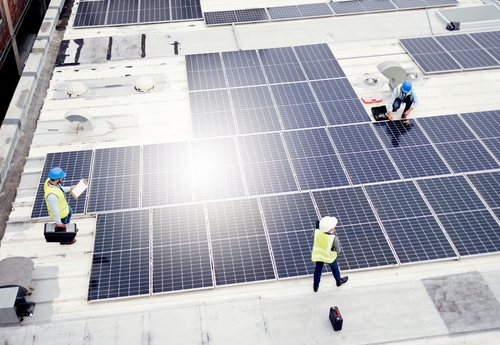The U.S. Department of the Treasury, the Department of Energy (DOE), and the Internal Revenue Service (IRS) have provided more information on the Qualifying Advanced Energy Project Tax Credit.

This key provision in the Inflation Reduction Act is designed to drive investment to coal communities and underserved areas. The additional information provided this week relates to the second allocation round under the program.
“President Biden’s economic agenda ensures all communities benefit from the growth of the clean energy economy by driving investment in areas of the country that have often been overlooked,” Deputy Secretary of the Treasury Wally Adeyemo said. “These investments will improve the nation’s energy security and create good-paying jobs in vital fields like clean-energy manufacturing and critical materials processing. They will also allow for existing energy infrastructure to be retooled for the clean energy economy. All this work will contribute to lower energy costs for families who have struggled to pay their utility bills.”
The Inflation Reduction Act provided $10 billion in new funding for the Qualifying Advanced Energy Project Credit program, expanding a tax credit created in 2009. Congress required that at least $4 billion be reserved for projects in communities that have been directly impacted by the closure of a coal mine or coal-fired power plant. The program provides incentives for clean energy manufacturing and recycling, industrial decarbonization, and critical materials processing, refining, and recycling.
A broad variety of projects are eligible to apply for an investment tax credit of up to 30 percent, including manufacturing of fuel cells and components for geothermal electricity and hydropower, producing carbon capture equipment or installing it at an industrial facility, and critical minerals processing.
The program received significant interest in Round 1, which allocated a total of $4 billion, including approximately $1.5 billion going to projects in communities with closed coal mines or coal plants. The $4 billion available for allocations in Round 1 was significantly oversubscribed, with applicants submitting proposals seeking nearly $42 billion in tax credits across all categories of projects.
The notice released this week describes how interested parties can apply for an allocation in Round 2 of the program. A total of $6 billion is available, with approximately $2.5 billion going to projects in energy communities. To apply to Round 2, taxpayers must first submit concept papers and those that receive a favorable review will be encouraged to submit a full application.
The DOE will evaluate concept papers and applications across multiple criteria and policy factors prior to making allocation recommendations to Treasury. Among the factors they will be looking at are (1) commercial viability; (2) greenhouse gas emissions impacts; (3) strengthening U.S. supply chains and domestic manufacturing for a net-zero economy; and (4) workforce and community engagement.
The portal will open to register and submit Round 2 concept papers starting no later than May 28. The deadline for concept papers will be 5:00 p.m. ET on the 30th day after the portal opens for concept paper submissions.